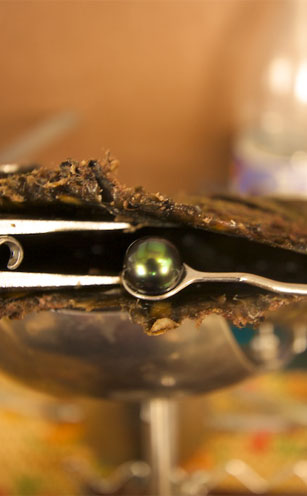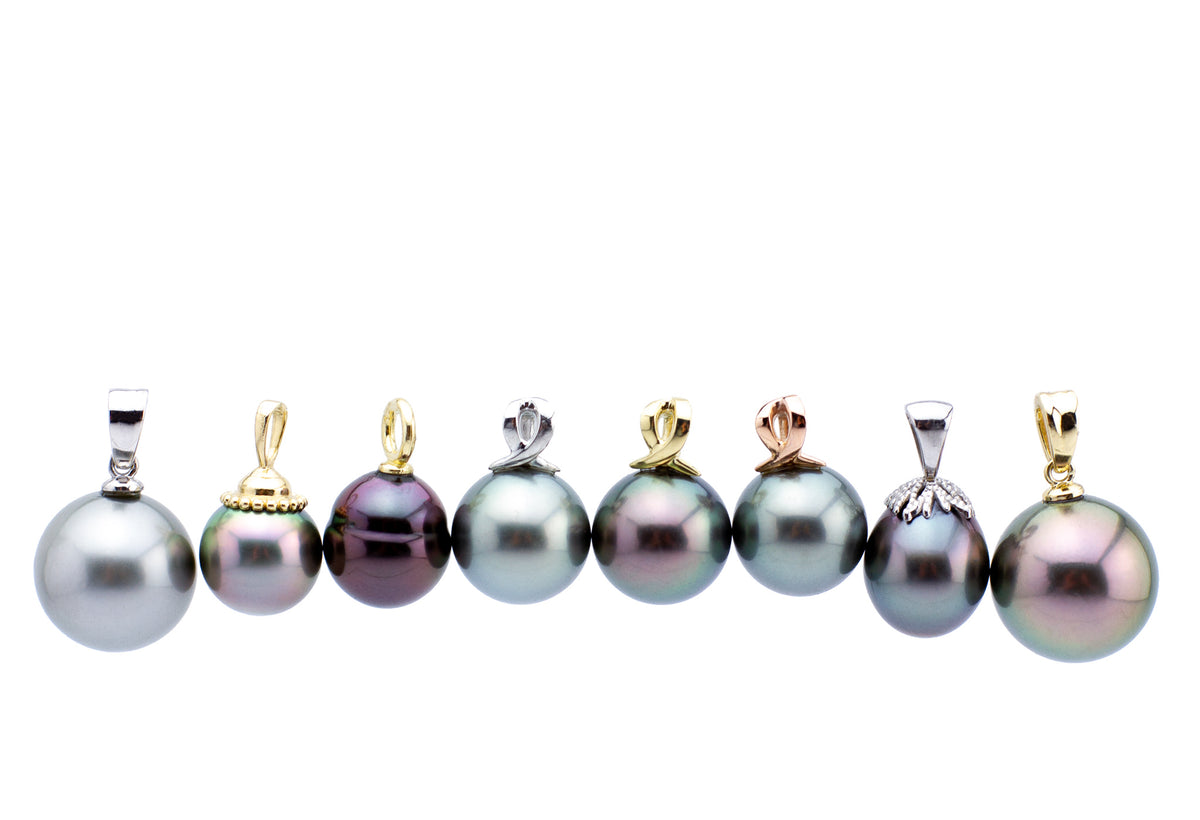Tahitian Pearl Farming
by Andy Bardon
Our oysters start their lives as wild, free-swimming plankton in the lagoon. After three weeks of swimming their new shells become too heavy and they search for a surface they can attach to. We set out collectors during strategic times of year usually corresponding to changes in the season that offer ideal places for the young and vulnerable oysters to seek refuge and mature.
After around two and a half years these collected oysters are large enough to start producing pearls.

The graft
Almost all the pearls you find on the market today are cultured, meaning an oyster has surgically been implanted with a small shell ball that will eventually become a pearl. Kamoka Pearl has pioneered many techniques, including the use of mother of pearl nuclei and using happy, hungry fish to clean parasites off our oysters.

Choosing the color
The first part of the graft procedure involves transplanting a small piece of mantle (the organ that secretes the oyster’s iridescent shell) from one oyster to another. The bulk of the research we have done at Kamoka has been focused on the complex nature of the mantle (called the graft tissue once it’s been cut for the graft), which largely dictates the quality of a pearl. Our donor oysters are meticulously chosen for the beauty of their colors, as this dictates the eventual color of the pearl.
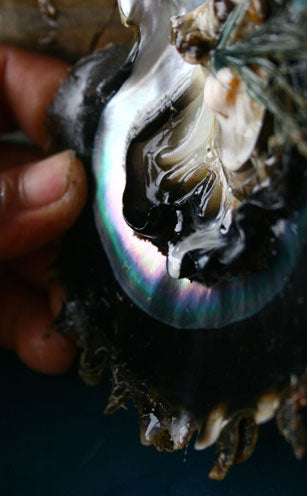
The nucleus
The next step in the grafting process is the insertion of a nucleus, the six to eight millimeter ball around which the pearl grows. A successful grafter uses sterile and razor-sharp tools, antibiotics, an eye for detail, and a very, very steady hand.
The Japanese researchers who pioneered the grafting process decided that the shell of a wild mussel in the Mississippi river basin had the appropriate density for a pearl nucleus, and to this day most nuclei come from this unlikely mollusk. This practice leads not only to inferior pearls, but has also endangered the very existence of this North American mussel due to over-fishing.
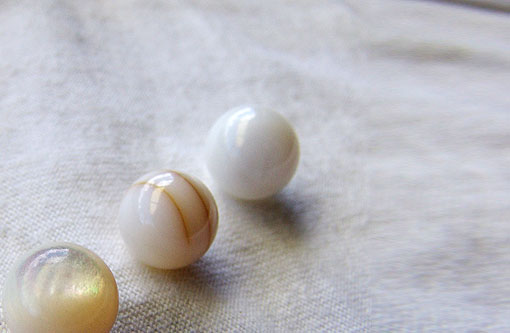
Kamoka’s sustainable nuclei
At Kamoka, virtually all our nuclei are made of mother of pearl (MOP), a natural product of our very own Pinctada margaritifera oysters or their Pinctada maxima cousins. We were the first company in Polynesia to use MOP nuclei, and the Tahitian Pearl Farming Board (Le Service de la Perliculture) found in independent tests that our nuclei produced three times more A grade pearls than any other nucleus type.
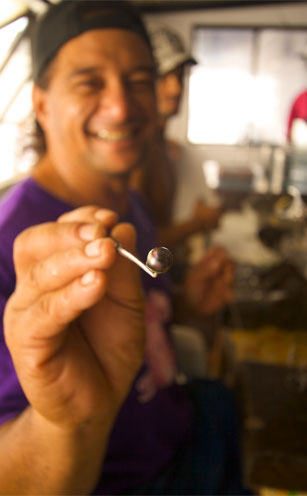
Growing the pearls
Immediately after the grafting operation, the oysters are placed inside baskets. The baskets are then suspended on long lines in the clear lagoon water for about a year and a half while the pearls inside them form and grow. They are kept at a depth where they receive the maximum nourishment and the baskets protect the oysters from predators like rays and sea turtles. Every few months we clean the parasites off the oysters either by hanging them near the reef where fish munch them clean, or by hand by scraping them with cleavers.

Harvest and the second graft
Finally the oysters are removed and their pearls are gently extracted. A second graft is then performed, this time with a much larger nucleus that roughly corresponds to the size of the extracted pearl. At the harvest of this second pearl, a third graft of even larger proportions is sometimes performed. Although extremely rare, we have used pearl nuclei up to 18 millimeters in diameter! Unfortunately every successive pearl sees the increasing age of the oyster and the subsequent decline in quality. This is why very large pearls of excellent quality are so rare.
